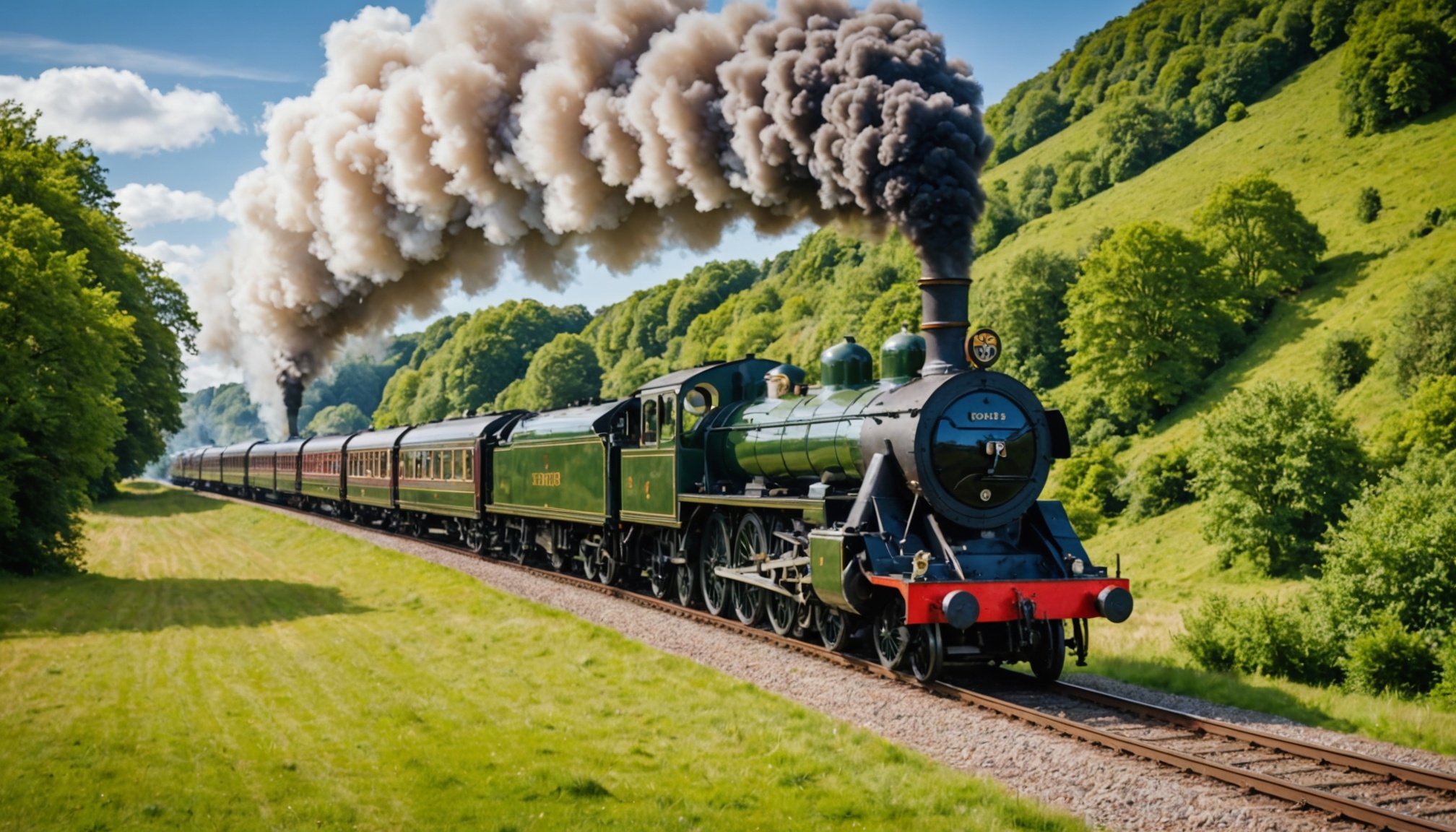Overview of Victorian Steam Train Experiences
Victorian steam trains are a cherished symbol of the UK’s rich travel history, drawing enthusiasts and tourists alike. Their origins date back to the 19th century, a time when they transformed transportation by offering faster and more efficient travel compared to horse-drawn carriages. These marvels of engineering played a pivotal role in the industrial and cultural development during the Victorian era.
Today’s steam train journeys offer unique travel experiences that transport passengers back in time. Riding aboard these historic trains allows visitors to explore the stunning British landscapes in a manner reminiscent of a bygone age. The allure of these classic locomotives lies in their ability to provide an authentic taste of history combined with the romance of train travel.
Also to read : Exploring Britain’s Maritime Legacy: Top UK Destinations for Unforgettable Guided Historical Tours
In the context of UK tourism, steam train travel holds significant cultural importance. It offers not only a way to explore the country’s picturesque locales but also serves as an educational experience, narrating the story of technological progress. Preserving and celebrating these trains enriches the tourism landscape, turning journeys into unforgettable historical experiences.
Notable Victorian Steam Train Routes
In the world of scenic routes, few journeys captivate the imagination as much as the renowned Victorian steam train routes. Highlighted among these are the iconic journeys offered by the Jacobite Steam Train, Bluebell Railway, and Ffestiniog Railway. Each provides an immersive experience steeped in history and natural beauty.
In the same genre : Explore the UK’s Most Enchanting Castles for an Unforgettable Medieval Feast Adventure
The Jacobite Steam Train
This route is celebrated for its breathtaking landscapes, traversing the West Highland Line from Fort William to Mallaig. Passengers are treated to views of Ben Nevis, tranquil lochs, and the world-famous Glenfinnan Viaduct, a structure echoed in the Harry Potter series.
The Bluebell Railway
Running through the picturesque heart of Sussex, the Bluebell Railway presents a charming journey through rolling countryside. This route is appreciated not only for its scenic delights but also for its meticulously restored stations and engines, offering a window into the past.
The Ffestiniog Railway
As a narrow-gauge railway in Wales, the Ffestiniog Railway winds through the dramatic landscapes of Snowdonia. Unique for its gravity-operated origins, the journey today provides a whimsical travel experience through ancient woodlands and serene valleys, making it a favourite for explorers.
Practical Travel Information
Embarking on a Victorian steam train journey requires a bit of planning, but the experience is well worth it. First, you’ll want to sort out your booking options. Many railways offer tickets online, making it convenient to secure your spot. Advance booking is recommended, especially during peak tourist seasons, to ensure availability and better pricing.
The costs of these trips can vary significantly. Factors influencing price include the specific route, class of service, and any additional experiences like dining. It’s advisable to compare options and consider any extras you might want to add for a more enriching experience.
When it comes to planning, timing is key. The best times to visit are typically late spring to early autumn. This period offers favourable weather and beautiful scenery, enhancing your travel experience. To maximise your journey, research the specific events or festivals along your chosen route that might coincide with your visit. Being informed and prepared ensures an unforgettable journey through history amidst the modern comforts of these spectacular steam train journeys.
Enhancing Your Journey
Turning a Victorian steam train excursion into a memorable adventure extends beyond the ride itself. Onboard, passengers can enjoy a variety of services designed to enhance travel experiences. Dining options range from simple snacks to gourmet meals, often served in charmingly restored dining cars. These meals provide a delicious taste of the local and historical flavors.
To enrich the journey, trains frequently offer historical narratives shared by knowledgeable guides or available through recorded audio commentaries. These stories bring the past to life, immersing passengers in the rich history of the railway and the regions it traverses.
Avid photographers will find ample opportunity to capture stunning vistas. Scenic tips include focusing on specific landmarks and timing shots to coincide with golden hour lighting for the best results. Many trains feature open-air carriages or allow for window-openings, providing unobstructed views perfect for snapshots.
In summary, whether indulging in culinary delights, delving into the rich history, or perfecting one’s photography skills, these elements collectively enhance a steam train journey, creating an immersive, nostalgic adventure.
Exploring the Regions Beyond the Tracks
Victorian steam train journeys offer more than just the ride; they act as gateways to regional tourism packed with nearby attractions and vibrant local culture. Once the train ride concludes, there’s a world waiting to be explored.
In regions rich with cultural history, many areas around the steam train routes boast exciting attractions. Visitors can delve into nearby museums or explore historical towns, offering insights into local culture and heritage. These destinations often have festivals and events that showcase traditional arts.
Consider venturing beyond the tracks to savour unique local culture through culinary experiences at charming countryside pubs or engaging with local artisans. This personal interaction enhances the sense of connection to the region.
Adding to the charm, scenic walking trails and nature reserves provide opportunities for outdoor activities such as hiking and picnicking. For those seeking leisure, a visit to nearby regional attractions like castles or manors offers a window into the area’s past.
Extending your journey beyond the train means immersing yourself in the local culture, thus creating a richer and more memorable travel experience.










